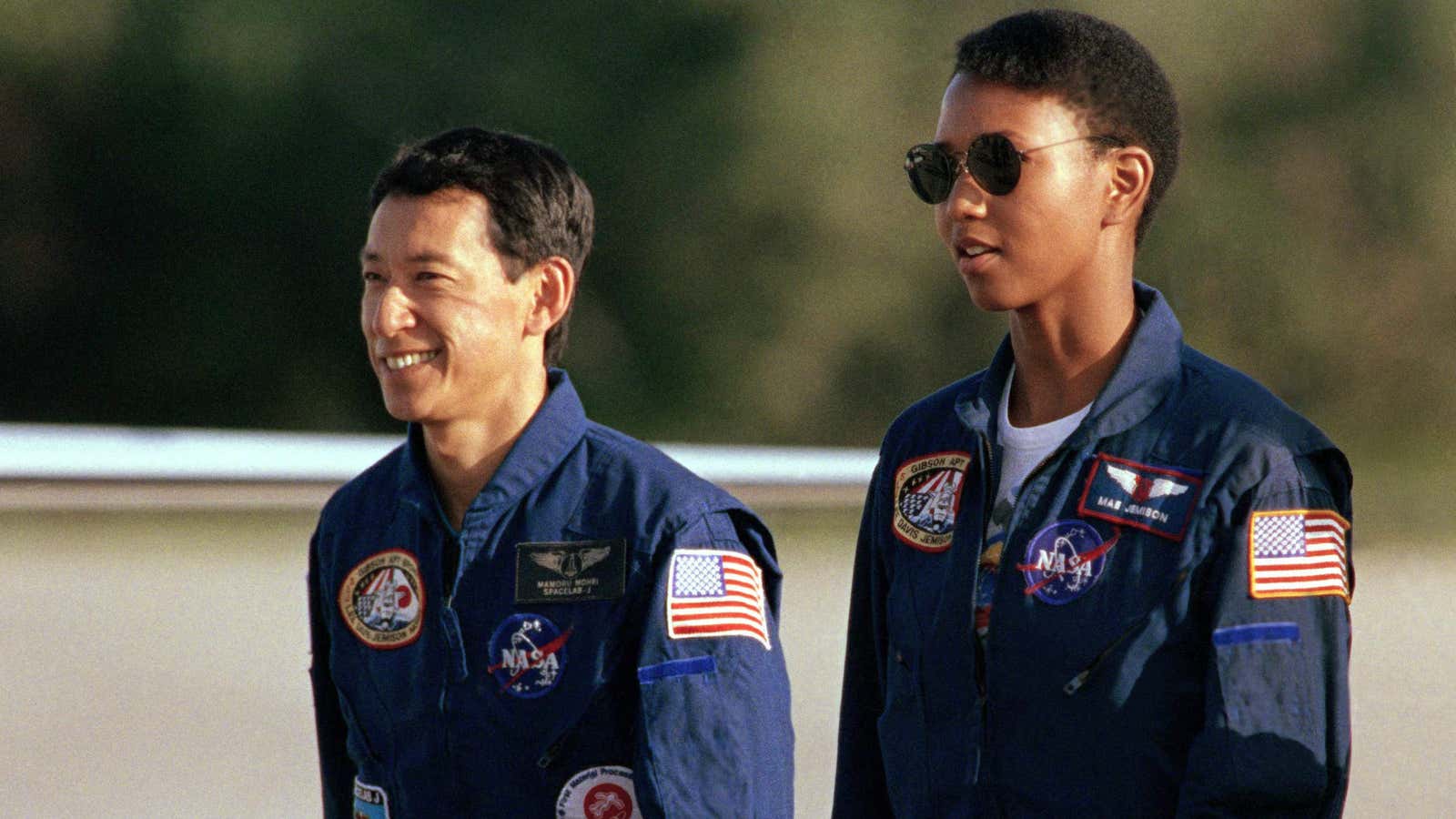Mae Jemison likes to point out that when H.G. Wells wrote The First Men on the Moon in 1901, humans could barely fly planes. Less than 100 years later, people were indeed walking on the moon. To Jemison, that leaves humanity with no excuses. We can figure out how to travel to another star in the next 100 years. It’s just a matter of will.
Jemison, a chemical engineer, physician, former NASA astronaut, and the first black woman to go to space, has personally experienced what happens when humanity takes space ambitions seriously. She grew up in Apollo-era America, where breakthroughs in spaceflight were the theme of the day. Discoveries that allowed people to travel into space in the 1960s and 1970s also dramatically advanced several fields at home, like medicine and material sciences. We might not have prosthetics, computer chips, MRI scans, or satellite telecommunications without space travel. But then political will for space innovation dried up. If it hadn’t, Jemison is convinced we would be on Mars. “We could go to Mars now. We have enough engineering knowledge to go to Mars. It’s public commitment, that’s the difference,” she told an audience at the UN Environmental Assembly in Nairobi, Kenya, earlier this month.

Now she’s trying to turn that enthusiasm valve on again, she said, “using travel beyond our solar system as a platform” for a scientific breakthroughs. That’s why she’s spearheaded The 100-Year Starship initiative, with seed funding from DARPA, the US military’s “blue sky” research agency, to encourage the basic research needed to develop the capability to send humans to another star. “Capabilities—notice that I didn’t say a launch date?” she said. “Why is that important? Because all the capabilities that are required to go beyond our solar system are the very same things that we need to survive as a species on this starship,” meaning Earth. “What’s the main capability we need? Sustainability.”
Our nearest neighboring star, Alpha Centauri, is really, really far away: “Voyager has been traveling at over 35,000 miles per hour since 1977, and it just now left our solar system. It would take 60,000 years for Voyager to get to Alpha Centauri traveling at the speed it is now. That means this is a whole other ball game. We would have to go much faster. We would have to have completely new energy to go much faster—completely new energy systems,” Jemison said. “And imagine what that would mean to the energy here on Earth, if we were able to go just a little bit [towards that].”
Over the next 100 years and beyond, humanity will have to learn how to survive on an increasingly inhospitable planet. As climate change progresses, the technical breakthroughs to avoid catastrophe are some of the same needed for interstellar travel, with perpetual, clean energy perhaps being the holy grail. But Jemison is thinking about everything, including what people would wear on a potentially endless space mission:
“Right now when you go up in space you bring a bunch of things that you put on. To do that [on an interstellar trip] you would need boxcars and boxcars of clothing. So how do you do that with material that’s recyclable? That don’t require a lot of energy, that you can produce [in-flight], and won’t pollute things? Cotton is one of the most toxic things that we produce. It takes a lot from the environment.”

Jemison is also thinking about human health. She wants the platform to come up with a way to model human physiology so completely that “we could run a clinical trial on it”—essential for space travel, but also potentially revolutionary for medical science back home.
“What happens if you’re in space is that some of the bacteria becomes more pathogenic—it actually becomes more virulent. That’s pretty strange. We can only imagine that’s going to happen more,” Jemison said. We can presume that’s only one of a myriad ways bodies will be challenged in deep space. But to send people that far out, we’d need to do more than just presume. “What if you could model it in some kind of way?”
We don’t know how to create any of these things yet—but Jemison is entirely undeterred. The space agency she grew up with “was trying to achieve something that was very difficult and we didn’t know how to do,” but nonetheless did it, she said. “That’s part of the reason why choosing something we don’t know how to do is a critical part of the platform.”
